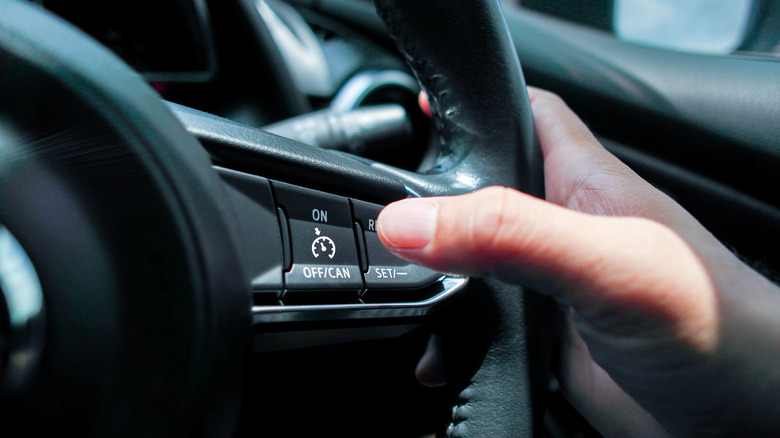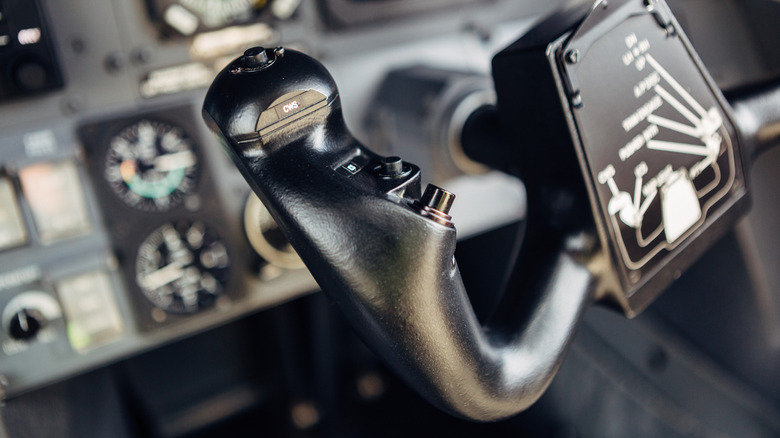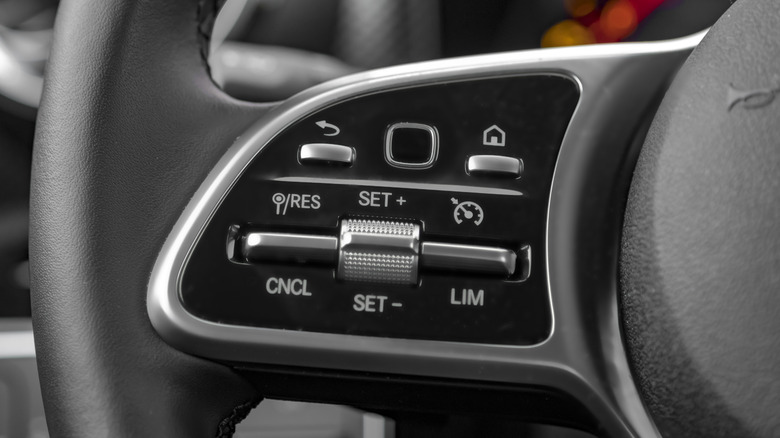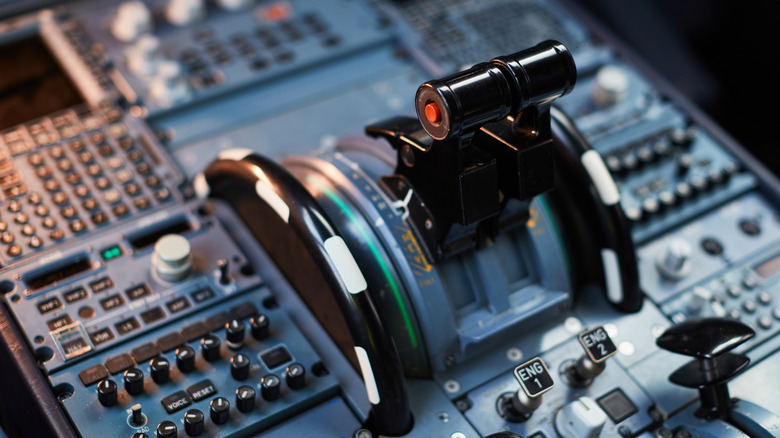Aircraft Autopilot Vs. Car Cruise Control: What's The Difference And How Do They Work?
Throughout the 20th century in particular, human transportation evolved in numerous major ways — both on the ground and miles above it. Cars became the norm, prompting the designation of roads and highways just about everywhere, and airplanes came to the forefront to move people and goods across vast distances. Innovation has made these forms of travel all the more effective. There are numerous passenger jets with incredibly long ranges and impressively fuel-efficient and even electric cars around every corner. It's to the point that, to some extent, these machines can handle a lot of the work for us.
While entirely self-flying planes and autonomous automobiles, which have specifically hit a troubling plateau, are a long way off from being standard, strides toward this technology have become such. Both airplane pilots and car drivers alike have been able to relax their responsibilities just a bit when operating their machine of choice. In recent decades, airplanes have become increasingly automated, with the now-commonplace autopilot function dating back to 1912. Meanwhile on the car front, even though it was technically introduced back in the late 1940s, cruise control has only become a regular site in recent history.
These are often regarded as similar mechanisms, but beneath the surface, autopilot and cruise control are quite different and work in different ways.
What to know about autopilot
As mentioned, the earliest form of autopilot originated well over a century ago, courtesy of Lawrence Sperry. His gyroscopic automatic pilot worked using, as the name suggests, a gyroscope, which provided pilots with key information regarding their altitude, the horizon — even when it wasn't visible — and their desired route. No longer did pilots have to be mindful of their surroundings when flying, nor were they basically limited to daytime flights. Naturally, autopilot has come a long way since Sperry's gyroscopic navigation system took the aviation world by storm and now operates in a different way.
In the modern era, autopilot is a significantly more computerized system. In most cases, planes are equipped with GPS technology that can determine its location with the aid of in-space satellites. This allows planes to not only maintain altitude and direction, but safely navigate the desired route. An autothrottle or autothrust system is then responsible for reaching a pre-set thrust and the maintenance of a pre-programmed speed once in flight. The pilots can take over at any time, and in most cases they're responsible for take-offs and landings. In some instances, like those of reduced visibility an autoland feature is enabled to execute a more precise touchdown onto the runway.
All in all, autopilot is just as much a means of navigation, take-off, and landing as it is a means of keeping speed constant. Cruise control, on the other hand, doesn't quite come with all the same benefits.
What to know about cruise control
Similarly to autopilot, car cruise control has been around for some time. Inventor and the first blind engineer recorded in United States history, Ralph Teetor, pioneered this technology in the 1940s. It involved a speed selector located on the car's dashboard, which extended along the drive shaft and into the engine itself. It would then keep the gas pedal in the desired position, maintaining the car's speed. The Speedostat, as it was trademarked, officially hit the market in 1958 under the Chrysler banner. Nowadays, it's not as much of a luxury feature, nor does it operate exactly as it did decades ago. Cruise control functions have evolved with the vehicles they're in.
For modern rides, cruise control works thanks to a designated computer, which is connected to the throttle via an actuator. This allows it to adjust the throttle and, therefore, maintain speed, per the driver's specifications. Once set using the buttons and switches on the steering wheel, cruise control can be adjusted in minor increments a few mph at a time and can be deactivated using the brakes. Though it's generally just for keeping a constant speed for long drives, in some vehicles like the cool interior feature-packed Kia EV6, for example, Navigation-based Smart Cruise Control does a bit more. On certain roadways, it uses information from the navigation system to adjust speeds accordingly.
Where autopilot and cruise control differ
With the timelines and mechanisms behind aircraft autopilot and car cruise control in mind, it's clear that there's some overlap between them. They both have a storied history and were created to simplify the duties of pilots and drivers alike. They have been infused with more complex, computerized technology as such has entered the transportation space. Beyond these overlaps, though, there aren't many more notable similarities to speak of. The sweeping differences between them then become more stark.
Aside from obvious differences like their respective transportation modes, and the fact that one is based in air travel and the other is grounded, the functions of autopilot and cruise control differ greatly. They both maintain speed, but while autopilot handles altitude, steering, and other traditionally human jobs, cruise control doesn't. Drivers still have to steer, avoid obstacles, brake, and the like. Adaptive cruise control senses the distance between your car and others on the road, adjusting speed to maintain safe following distance, but general cruise control doesn't mean self-driving just yet. Also, both use GPS, but autopilot uses it to chart a course while ACC systems use GPS-connected proximity sensors or cameras solely to make speed alterations.
At first glance, autopilot and cruise control seem like the exact same thing. While they do have some shared traits, evidently, they serve different purposes and suit different needs.



